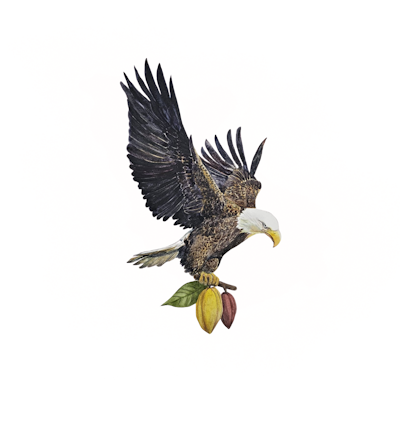
The winter solstice is an astronomical phenomenon which occurs in mid-winter, and its date is typically on December the 21st. Winter Solstice is seen as the end of winter’s dominant march which has been gaining ever more steam since Samhain. The winter solstice is the furthest distance we in the northern hemisphere get from the sun while the earth is on its orbit around the sun. The earth’s axis tilts towards the sun (which would be our summer) and all the way back around till it tilts away from the sun (our winter). This lengthening and shorting of distance for the sun’s rays to reach us is what gives us the difference between summer and winter. Another way to view it is by using ying and yang, as we in the northern hemisphere experience our winter solstice (shortest day of the year) the southern hemisphere has their summer solstice (longest day of the year. Within six months the roles will be reversed. There is such a variation between the two.
In ancient times it was said that the battle between good and bad took place (light and darkness) around this time, where an arm wrestle was taking place between a dark force and light force was raging, the result of this battle will be revealed on the evening of winter solstice and that the winter solstice light starts to beat the darkness back so that life as well as light may once again flourish upon the lands. The reality is that one can not survive without the other and represents the cyclical nature of our very existence. This is the ying yang of life, the balance in life.


The winter solstice was one of the most important celebrations in the pre-Christian world. Across the Northern Hemisphere, there were ancient festivals that would mark the shortest day of the year when the sun appeared to “stand still.” Solstice is from the latin sōlstitium which translates as Sun stop or Sun still. Several of these festivals have survived to this day and others have been incorporated into modern festivals. Infact, the burning of the yule log, the bringing of trees in to homes were all pre-christian traditions, likewise the use of holly at this time of year was also a pre-christian tradition. The burning of the yule log was used as a ritual to cleanse the ancestral line, cleanse the living family and to bring good fortune. The Christmas tree (pine) was evergreen and believed to hold great strength as most of the other trees had all but died this time of the year but the pine remained strong and defiant through the cold winter. Likewise with Holly, this tree was also an evergreen tree and was known as a strong protector against beguiling ( curses) it would not let any unwanted negative energy or unwanted spirits in to the homes of the ancients. All the mentioned being pre-christian traditions brought from the old religion to the new religion. To this day these traditions are practised but very few are aware of the origins.
The long cold winter is still in full swing. The harshness of the weather, the lack of light and the seemingy death state of the environment is prominent, but the winter solstice brings hope, it brings a fresh state of joy so longed for, it brings the knowledge that every day after the solstice we begin to creep out of the darkness, each day will be marginally longer and the Sun will begin to feature more and more with its life giving light and heat. This is the fundamental reason for this time of year to be celebrated with gathering, feasting, music, song and of course fire which is a representation of the light, life and heat giving sun.
It may be difficult for modern people to get their heads around the idea that everything to the ancients ultimately revolved around the sun, as today we can conveniently buy our food in the supermarket, buy our fuel that heats our homes and live comfortably in the modern world. To the ancient people of Ireland everything revolved around the seasons, the growth of the crops and health of the animals to see them through the lean and cold winter months until growth began again through the sun getting stronger and stronger. Imbolc arrives in early February which is the start of Spring and everything literally springs back in to life and the wheel keeps turning.

There are many ancient sites in Ireland that were specifically built in relation to the Winter solstice. Newgrange being the better known of the ancient sites where on winter solstice sunrise the Sun enters the inner chamber of the passage tomb and illuminates this 5000 year old sacred space. The engineering and knowledge of the Neolithic people of Ireland is truly amazing. These winter solstice sun allignments connected to ancient Neolithic ceremonial places include Newgrange Co. Meath, The Hill of Tara, Co Meath, Loughcrew, Co Meath, Knockroe passage tomb, Co Kilkenny, Carrowkeel and Carrowmore, Co Sligo, Drombeg, Co Cork, Beltany stone circle, Co Donegal, Slieve Gullion and Killadangan, Co Mayo. There are many more but this is to mention just a few. These sacred spaces were gathering places to celebrate the coming of the sun, the end of the dark cold days and the coming of the light. Some of these spaces were places to inter the dead, thin places where the veil between the physical worl d and spirit world were at its thinnest.
Not all of these places were to honour the dead. The killadangan winter solstice complex in Westport, Co Mayo has a stone row allingnment connected to the setting sun of Winter solstice. As the Sun sets in to a saddle in the famous Croagh Patrick pilgrim mountain (Cruchan Aighle, Eagle mountain) a set of upstanding stones are in alignment with where the sun sets on winter solstice evening.
Thankfully people to this day continue to visit these beautiful ancient sites, following in the footsteps of their ancestors millennia ago. As the Cailleach herself still holds control over the land this winter time, she will soon hand power over to Bridget to carry us in to Spring time, where growth will begin and colour will show after a long winter spell. The Holly and the Oak will enter a fiercesome battle on winter solstice. The Holly represents the Winter and the Oak represents the Spring and Summer time. The Oak wins the battle at Winter solstice telling us the spring and summer is on its way. The two will go back in to battle on the Summer solstice where the Holly will win the battle telling us that every day after the summer solstice the days will be getting shorter with the short cold days in sight.
Aldo Jordan, The Irish School of Shamanic Studies, 2022

